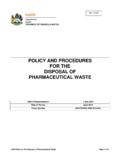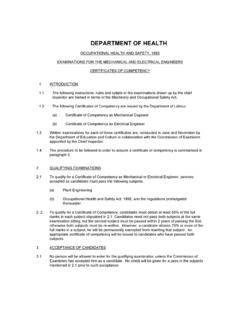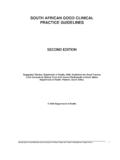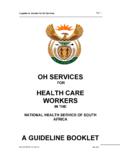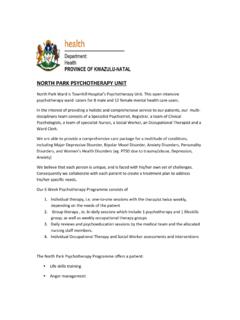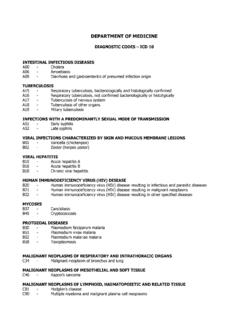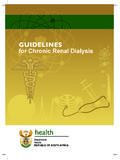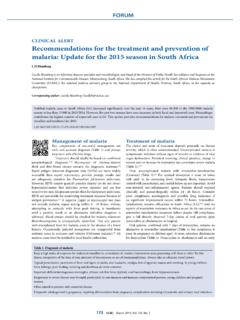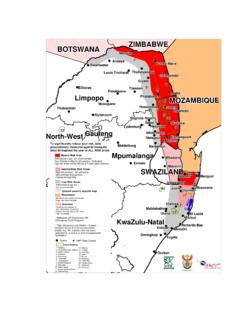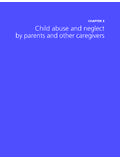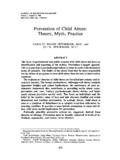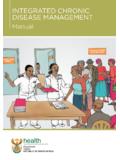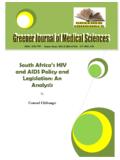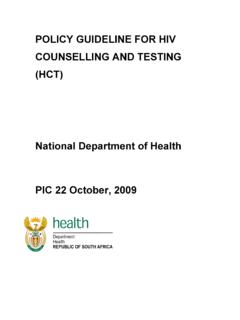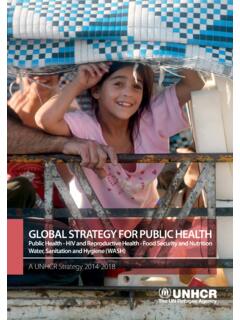Transcription of 2ND M C U 5 Y (C MM C): 2014 - Department of Health
1 2ND TRIENNIAL REPORT OF THE COMMITTEE ON MORBIDITY AND MORTALITY IN CHILDREN UNDER 5 YEARS (COMMIC): 2014 _____ ABRIDGED VERSION November 2014 1 CONTENTS Contents 1 Executive Summary 3 Overview of child Mortality in South Africa, 2011 9 Recommendations 23 child Mortality Data 35 2 3 EXECUTIVE SUMMARY Not everything that can be counted counts and not everything that counts can be measured Albert Einstein The Committee on Morbidity and Mortality in Children under 5 years (CoMMiC) is one of three national ministerial committees continuously reviewing maternal, perinatal and childhood deaths in South Africa. CoMMiC s primary objective is the monitoring of mortality and morbidity data in children younger than five years in an effort to reduce deaths and improve the Health of young children.
2 The committee is also tasked with improving clinical governance and assisting in the development of appropriate standards of Health care for South African children. This is the committee s second comprehensive report and covers the triennium 2011 to 2013. This report is being presented recognising that there is just over a year left for countries to achieve the United Nations Millennium Development Goals (MDGs). Four of the MDGs are directly relevant to children, with MDG 4 specifically calling for a two-thirds reduction in the under-five mortality rate between 1990 and 2015. This report provides an opportunity to reflect on the country s past and recent child Health related achievements and performance, and to deliberate on, and recommend, an appropriate post-2015 agenda. In the three years since the first triennial report, changes in the social environment and Health services in the country have positively affected the Health status of children.
3 child and infant mortality rates have both strikingly diminished. This is mainly because of fewer HIV/AIDS deaths as a result of new regimens for the prevention of mother-to- child transmission (PMTCT) of HIV as well as more children being eligible for, and initiated on, antiretroviral treatment. The roll-out of rotavirus and pneumococcal conjugate vaccines have also contributed to fewer diarrhoeal and pneumonia deaths, respectively. The committee (and this report) depends on data from a number of sources, including: Health Data Advisory and Co-ordination Committee (HDACC) reports that use a rapid mortality surveillance system (RMS) that depends on death notification data and offers national trend data. Vital registration data collated and published by Statistics South Africa on an annual basis provide provincial and district level data.
4 The 2011 Census that collected data on household deaths during the preceding year. 4 The District Health Information System which only captures in-facility events in the public sector. The child Healthcare Problem Identification Programme ( child PIP) database which collects data on deaths at approximately half of the nation s public hospitals. Discrepancy in the quality of data obtained from these different sources means that there remains uncertainty about the exact child mortality rate in South Africa. Under five and infant (under one year) mortality rates based on RMS data are shown below. Both rates have consistently declined from 2009 to 2012 in all provinces as well as in the country as a whole. 2009 2010 2011 2012 Under 5 year mortality rate (per 1000 live births) 56 52 40 41 Infant mortality rate (per 1000 live births) 39 35 28 27 The number of under-five deaths has declined from approximately 60 000 in 2008 to 38 000 in 2012.
5 Although this translates into about 60 fewer child deaths per day in 2012 than in 2008, it still means that more than 100 under-5 children died each day in 2012. Three-quarters (74%) of them were aged less than one year. In 2011, the Free State under-five mortality rate ( ) was almost three times higher than that in the Western Cape ( ). Lower than expected mortality rates in a number of rural provinces suggest that under-reporting remains pertinent, but its true extent is difficult to quantify. The in-hospital mortality rate (IHMR) refers to the proportion of admitted children who died. The IHMR for children under-one declined from in 2010 to in 2013, whilst the IHMR for children under five years of age declined from in 2010 to in 2013. This decrease probably reflects reduced illness severity as a result of fewer HIV/AIDS related admissions rather than improvements in hospital Health care delivery.
6 Cause of death data was obtained through the Vital Registration system (death certificates). In 2011, one-quarter of deaths were reported to be due to neonatal causes, whilst gastro-enteritis (15%) and acute respiratory infections (mostly pneumonia) (13%) were the next most important. Non-natural causes (6%), malnutrition (4%), congenital abnormalities (4%) and tuberculosis (2%) were other major contributors. Most non-natural deaths were ascribed to preventable causes such as drowning, burns and electrocution. Of concern is that the cause of death was classified as being ill-defined in 16% of instances, indicating that the quality of death certificate completion by Health professionals remains a problem. 5 HIV/AIDS and malnutrition contributed as both primary and underlying causes of child mortality.
7 Based on child PIP data, about thirty percent of children who died between 2010 and 2013 were classified as being severely malnourished. The proportion of children who were HIV-infected or HIV-exposed (with unknown HIV-infection status) declined from almost half in 2010 to approximately one third in 2013. PMTCT interventions in South Africa have greatly reduced the need for antiretroviral treatment (ART). A United Nations report infers the number of South African children needing treatment dropping from nearly 60,000 to about 10,000 per annum over the past decade. DHIS data indicated a catch up in the provision of ART to children, although only 50-60% of eligible children were recipients. A high proportion of child deaths are preventable. Audit of child deaths through the child PIP system continues to reveal many modifiable and avoidable factors at home and at all levels of the Health system.
8 Approximately 30% of modifiable factors occurred at home, and included the failure by the caregiver to recognise a child s severity of illness, delays in seeking care for the child and inadequate nutrition. Among the remaining 70% of Health system factors, most (80%) related to Health personnel. A disproportionate number of modifiable factors continue to take place in the Accident and Emergency setting, considering the relatively short period that children spend there. Access to Health care for sick children remains a problem. More than half of all registered child deaths (55%) occurred outside the Health service, despite many of these children having prior contact with the Health service shortly before dying. Only 36% of deaths in the post-neonatal period (1 month to 5 years) occurred in Health facilities.
9 The distribution of paediatricians, which is as a proxy indicator for access to more specialised services, shows extreme geographic inequities. Notwithstanding inequities in access to Health services, utilisation of primary healthcare services is reasonably good, with some of the poorest provinces having better attendance rates. In compiling recommendations for this report, the Committee focussed on the word ACCESS . Firstly, the word has powerful intrinsic worth in indicating why the country has not adequately dealt with preventable childhood killers and what might be done. Secondly, it serves as a useful acronym to point to actions required to improve life outcomes for children in South Africa. The recommendations section highlights seven key words that can open the door to improved outcomes for children: A-ccountability, C-onnected, C-apacitated, E-ssential, S-upport and S-tandard.
10 The required actions or activities associated with these key words is related to how they involve households, Health workers and the Health system. This is summarised below: 6 Households Health workers Health systems Accountability By government to ensuring a safe living environment To care seekers through empowerment of Health workers To the community Connected With the Health system To the system where they work To all sectors who ensure healthy children Capacitated To provide a safe, caring and stimulating environment To deliver appropriate Health care To meet the needs of children with emergency, acute and chronic conditions Essential Package of care that is available Package of care understood and delivered Package of care available and accessible Support For ECD activities For training, Health care delivery and personal Health To meet the demands of the community served Standard Package of care Human resource (staffing)
